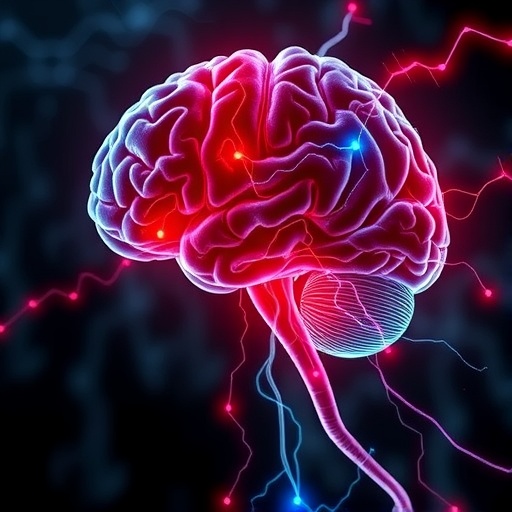Aggression and self-harm, often observed intertwined in individuals bearing the scars of early-life trauma, have long puzzled clinicians and researchers alike. Traditionally, the linkage between these behaviors has hinged on self-reported data, offering valuable but subjective insights that fail to unravel the neural mechanisms underpinning this complex relationship. A groundbreaking study conducted by neuroscientist Sora Shin and her team at the Fralin Biomedical Research Institute at Virginia Tech’s Center for Neurobiology Research now illuminates this intricate connection by revealing specific brain circuits altered by early traumatic experiences.
Shin’s investigation delves deeply into the thalamic and hippocampal systems, focusing on the nucleus reuniens—a pivotal neural hub serving as a conduit between the prefrontal cortex and hippocampus. This brain region is integral to cognitive functions such as memory consolidation, emotional regulation, and decision-making processes. Dysfunctions therein have prominently surfaced in prior studies exploring impulsivity and anxiety-related phenotypes, yet the exact pathways linking this region to aggression and self-injurious behavior remained elusive until now.
The study employs sophisticated experimental models using rodents to simulate early-life trauma, thereby reproducing the neurobiological and behavioral sequelae commonly seen in humans. Fascinatingly, Shin and colleagues identified that trauma induces hyperactivity in a specific class of neuronal calcium channels within the thalamo-hippocampal pathway. This hyperactivation escalates neuronal excitability, thereby predisposing subjects to impulsive aggression and self-harm. Calcium channels, critical to cellular signaling and neurotransmitter release, thus emerge as key molecular players translating traumatic experiences into maladaptive behaviors.
Beyond the circuit-level dysfunction, this research underscores the role of pain processing in the genesis of these behaviors. Pain, both physical and emotional, appears to serve as a gateway, mediating the neural adaptations that culminate in aggression and self-injury. This insight supports a continuum hypothesis where seemingly distinct maladaptive behaviors may share common neurobiological substrates, fundamentally rooted in altered pain perception and processing.
Shin’s team meticulously elucidates how early adversity reconfigures neural circuitry by enhancing calcium channel activity. This neuroplastic change results in the hyperactivation of neurons in the nucleus reuniens, which translates into aberrant behavioral phenotypes. By pinpointing these molecular mechanisms, the research transcends the limitations of subjective symptom reports, offering a robust, mechanistic framework for understanding the pathogenesis of aggression and self-harm.
The implications of these findings are profound, especially considering the socio-clinical ramifications of pathological aggression and self-destructive behaviors. Aggression contributes significantly to societal disruption, violence, and mental health morbidity, while self-harm remains a critical clinical challenge with limited mechanistic understanding. This study’s elucidation of a shared neural basis opens avenues for targeted therapeutic interventions aimed at modulating calcium channel activity within the thalamo-hippocampal circuit.
Furthermore, the study’s interdisciplinary approach highlights the intersection of molecular neurobiology and behavioral science. Shin’s research leverages cutting-edge neurotechnologies, including in vivo calcium imaging and electrophysiological recordings, allowing precise dissection of circuit functionality and its behavioral correlates. Such methodologies underline a paradigm shift in neuroscience research, moving towards integrative models that encompass molecular, circuit, and behavioral dimensions.
Crucially, the study also raises important questions about the temporality and plasticity of these neural changes. While the data implicate early trauma as a trigger for maladaptive neural remodeling, the potential reversibility of channel hyperactivity and its behavioral consequences remain under active investigation. These future directions could inform the development of pharmacological agents or neuromodulatory therapies that restore circuit homeostasis.
In contextualizing these discoveries, it is essential to acknowledge Shin’s previous work on how early-life stress influences other maladaptive behaviors, such as binge eating and emotional eating. Her consistent focus on the neurobiological imprint of trauma on diverse behavioral phenotypes reinforces the idea of a broad and multifaceted impact of early adversity on brain function and behavior.
This research carries significant translational potential, as calcium channels are pharmaceutically targetable and thus may serve as therapeutic points of intervention. By attenuating calcium channel hyperactivity, it may be possible to mitigate the heightened risk of impulsive aggression and self-harm in trauma-exposed individuals, offering hope for more effective treatment options.
Moreover, the identification of the nucleus reuniens as a critical node in this pathological circuitry advocates for more targeted neuroimaging and neuromodulation studies in human populations. This could refine diagnostic precision and lead to more personalized approaches in clinical practice, a pressing need given the heterogeneity in presentations of aggression and self-injurious behaviors.
As Shin reflects on her study’s outcomes, she emphasizes how aggression and self-harm, traditionally viewed as distinct clinical entities, may actually represent points along a shared neurobehavioral continuum influenced by neural processing of pain. This nuanced understanding challenges existing diagnostic frameworks and beckons a re-evaluation of therapeutic strategies in psychiatry and behavioral medicine.
The study is well-supported by grants from prominent funding bodies, including the National Institute of Mental Health, highlighting its significance within the scientific and medical communities. Additionally, contributions came from various institutional support funds and international fellowships, ensuring the robust execution of this multifaceted research.
In conclusion, this seminal work by Sora Shin and colleagues is poised to shift prevailing paradigms in neuroscience and psychiatry. By unraveling the thalamo-hippocampal pathways that govern aggression and self-harm, it builds a pivotal bridge between early-life trauma and adult neurobehavioral outcomes. The integration of molecular, circuit, and behavioral analyses not only expands our understanding of these challenging behaviors but also sets the stage for innovative, mechanism-based therapeutic interventions that hold promise for improving human health at both individual and societal levels.
Subject of Research: Animals
Article Title: Thalamo-hippocampal pathway determines aggression and self-harm
News Publication Date: 5-Nov-2025
Web References: http://dx.doi.org/10.1126/sciadv.ady5540
References: Sora Shin et al., Science Advances, 5-Nov-2025, DOI: 10.1126/sciadv.ady5540
Image Credits: Clayton Metz/Virginia Tech
Keywords: Aggression, Nervous system, Human brain, Behavior disorders, Calcium channels




